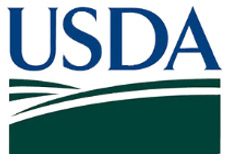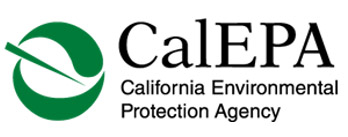On-Farm Compost Resources
California's Healthy Soils Initiative
Compost application has a number of key benefits for our farmers and ranchers as well as the state of California as a whole. Some of the many benefits can include:
| Improved infiltration, soil moisture, and water retention | Improved water quality from reduced runoff and nutrient stabilization | ||
| Carbon sequestration and reduced greenhouse gas emissions | Increased soil organic matter which increases fertility, plant health, and yields |
Producing compost on-farm provides additional benefits for farmers and ranchers including improved nutrient cycling by converting “waste” agricultural materials into a soil amendment and increasing the export value of excess manure. Composting, versus land applying, these materials also reduces the risk of pathogen contamination.
The resources below are intended to help you start composting on-farm and capture these benefits as easily as possible
What's New
SB 279: This bill would expand this excluded activity exemption for composting activities by eliminating the maximum square-foot condition and authorizing a total amount of feedstock and compost onsite at any one time, authorize composting activities to give away or sell up to 5,000 cubic yards of compost product annually, and increase, by regulation, that amount when the composting is of agricultural materials and residues that are from a large-scale biomass management event at an agricultural facility.
AB 411: This bill would, notwithstanding those prohibitions, authorize any part of a livestock carcass resulting from a routine livestock mortality event or on-farm processing to be composted if certain requirements are met, including, among others, that the composting is conducted in accordance with best management practices for livestock composting.
Regulatory Compliance
Composting activities are primarily regulated by Cal Recycle, the State Water Resources Control Board, and local Air Districts. The following resources are available to help understand what you may need to provide to these organizations to maintain compliance as you start an on-farm composting operation or cooperative.
-
On-Farm Compost Regulatory Overview
- This document explains the main regulations that apply to an on-farm compost operation and how these apply to an individual farmer vs. a cooperative.
-
Contact information
- If you have questions for one of these regulatory bodies, please use the contact information to get in touch with them
Best Practices
There are many factors to consider when planning how to compost on-farm and ensuring your final compost is appropriate for its desired end use. These factors include:
- What feedstocks to use and in what proportion
- How often to turn and water a compost pile
- How much final compost to apply to your crop and when
- How to limit pathogens and ensure that your compost is safe to use or sell
The resources below can help you answer these questions for your particular operation. If you would like more guidance, there is a list of technical assistance providers with composting experience and a list of training opportunities below.
Nutrient Management and Compost Creation
-
Compost Production and Utilization: A Grower’s Guide
- This guide, developed by CDFA and UC ANR, includes information about different kinds of compost, advantages and disadvantages of using compost, managing the composting process, and compost utilization.
- USDA NRCS Practice Standard for Compost Facilities
- While compost operations in the state of California do not need to meet these standards, the USDA NRCS practice standards provides a framework for the factors to consider when siting and starting a compost operation as well as a list of records one should keep for compliance.
-
Soil Fertility Management of Organic Crops
- This guide from UC ANR provides information on how to assess your nutrient needs and incorporate compost into your nutrient management plan.
-
Assessing Compost Quality for Agriculture
- These resources from UC ANR provide information on how to evaluate the quality of final compost.
-
Manure Composting:
- Video highlighting 15 farm operations and 6 composting technologies from low- to high-tech with special emphasis on retrofitting farm equipment to perform compost tasks.
- On-Farm Composting Handbook:
- A comprehensive handbook covering all aspects of on-farm composting from benefits to compost creation and application.
Food Safety
-
FSMA Produce Safety Rules
- This document explains the documentation requirements for commercial soil amendment suppliers and highlights scientifically valid treatment processes to ensure compost is safe for application on crops.
- Tip sheet for FSMA Compliant On-Farm Thermophilic Composting
- The following are examples of documents that will demonstrate compliance with food safety regulations:
Organic Labeling
Organic Input Material (OIM) includes bulk or packaged compost that is to be used in organic crop production compliant with the National Organic Program standards.
To sell or distribute OIM compost, you must be compliant with USDA National Organic Program Standards and CA Fertilizing Materials Law and Regulations, including:
-
The feedstocks can only be allowed materials. This specifically excludes material containing synthetic substances, chicken litter from a housing facility sprayed with odor or dust control chemicals, sewage sludge (biosolids), and burned crops or burned manure.
- Expected initial C:N ratio should be 25:1 to 40:2
-
During composting, the material must maintain a temperature of 131-170 ˚F for 15 days, during which the composting materials must be turned at least 5 times.
- The temperature must be measured every day during that period, and
- You must maintain temperature and turning logs.
-
Temperature and turning logs as well as laboratory analysis of Fecal coliform and Salmonella sp. must be submitted at time of registration and every three years after. Density of pathogens must not exceed the following thresholds:
- Fecal coliform: 1000 MPN (most probably number)/g
- Salmonella sp.: 3 MPN/4 g
- Compost must be registered through CDFA's Organic Input Material Program.
Some of the resources you can find on the CDFA Organic Input Material Program webpage include:





